Here’s a $1,000,000 question:
What would be the main reason for 9 out of 10 prospects to choose your competitor?
A better price? A special offer?
One would think so, but as the WebFX research reveals:
“89% of consumers shop with a competitor after a poor user experience.”
Surprisingly (or not), today’s customers are more driven by experience than anything else. They prefer online stores that can offer personalized, fast, and smooth customer journeys from start to finish.
While the eCommerce industry has been offering personalizations through Artificial Intelligence (AI) for years, it has yet to fully adopt AI for speed optimization.
But that is about to change in 2026.
Keep reading to find out why you should implement AI-driven site speed optimizations and how you can do it to make 90% of prospects choose your store 9 out of 10 times.
Understanding AI and its role in Ecommerce
Feel free to skip this part if you’re well aware of the opportunities AI brings to the eCommerce world in 2025.
If you’re new to all these things, here’s a quick overview of AI’s capabilities and how it can actually elevate your business performance:
Data mining: Unearthing valuable insights
Data mining involves analyzing large datasets to discover patterns, correlations, and trends that might otherwise remain hidden. In eCommerce, data mining can enable you to understand customer preferences, optimize inventory levels, and personalize marketing strategies. By sifting through transactional data, customer feedback, and browsing behaviors, you can tailor your offerings to meet specific customer needs, enhancing satisfaction and loyalty.
Machine learning: Enhancing decision making and personalization
Machine learning focuses on developing algorithms that enable computers to learn from and make data-based decisions. This technology powers recommendation engines in eCommerce platforms, suggesting products to users based on their browsing and purchase history. By continuously learning from user interactions, machine learning models offer increasingly accurate recommendations, significantly improving the shopping experience and increasing sales.

Source: About You
Natural Language Processing (NLP): Bridging human communication and AI
NLP allows computers to understand, interpret, and generate human language. In eCommerce, NLP powers chatbots and virtual assistants that provide customer service around the clock. These AI-driven tools can handle inquiries, offer personalized shopping advice, and facilitate transactions, ensuring a seamless and engaging user experience.
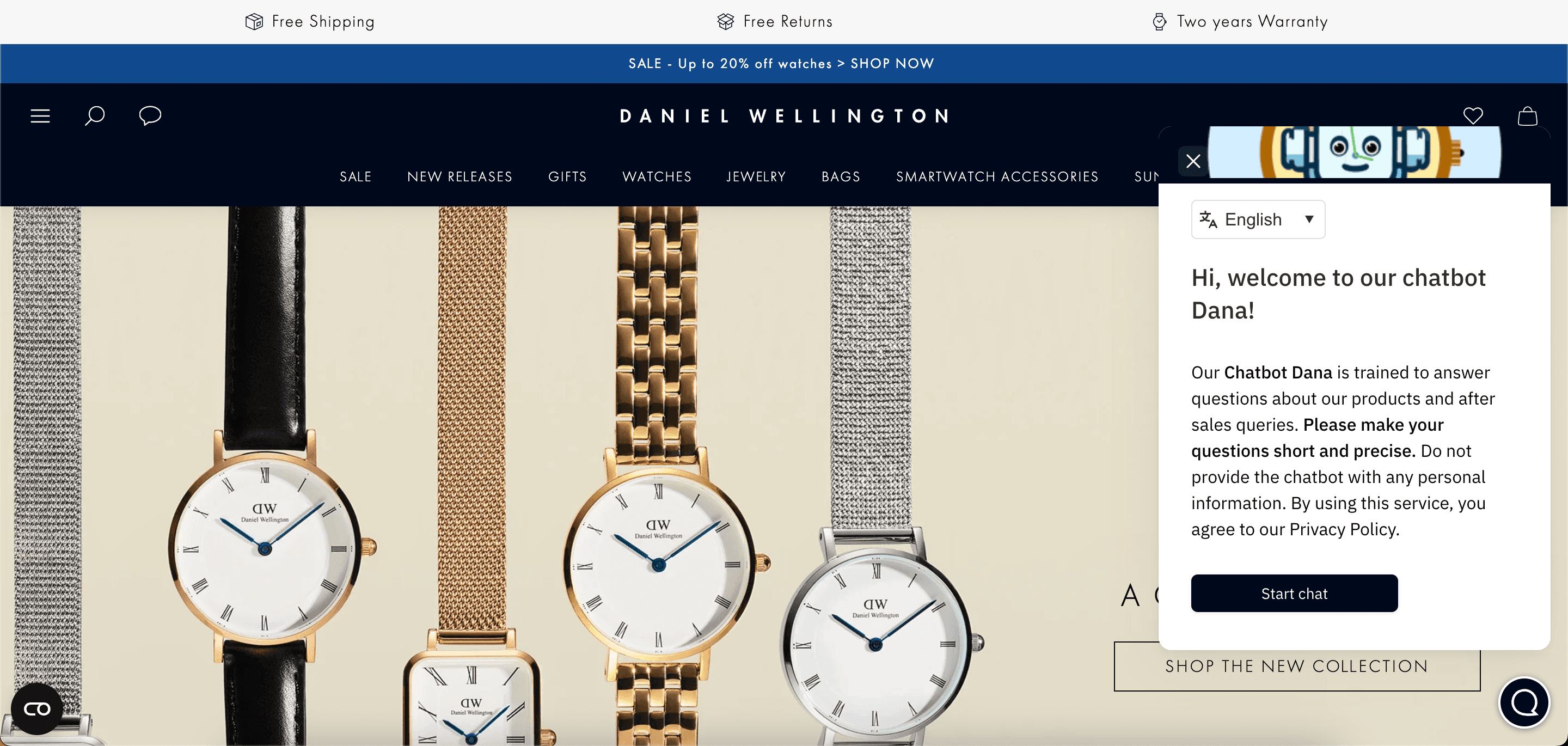
Source: Daniel Wellington
Computer vision: Transforming how we interact with products online
Computer vision technology enables computers to interpret and understand visual information from the world. When it comes to eCommerce, it allows for innovative features like visual search, where customers can search for products using images instead of text. Additionally, computer vision supports augmented reality (AR) applications, enabling customers to visualize products in their own environment before making a purchase.
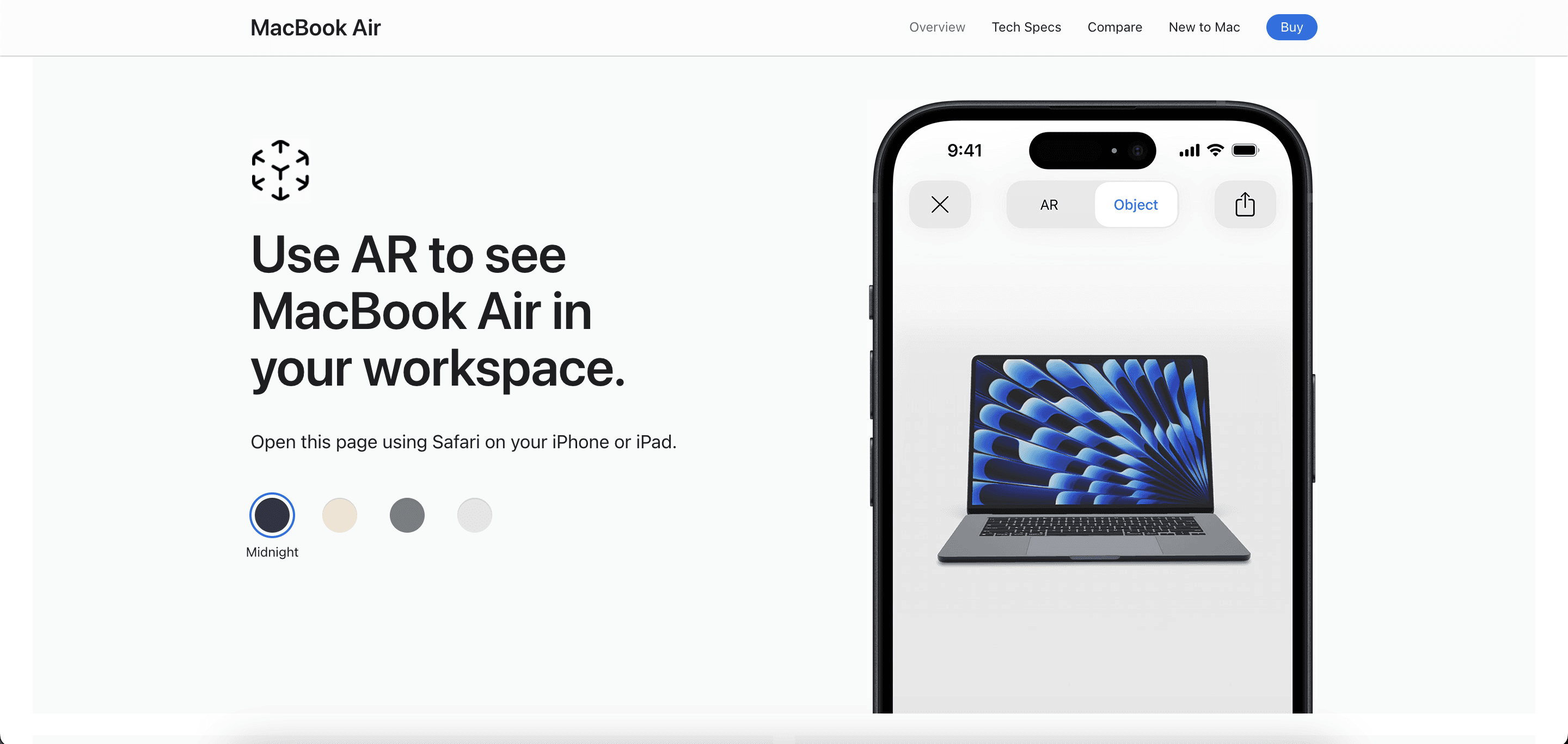
Source: Apple
Predictive analytics: Forecasting future trends
Predictive analytics uses historical data to predict future events. This AI technology can help you forecast demand, optimize inventory management, and personalize marketing efforts. By analyzing past consumer behavior, predictive models can identify potential bestsellers, anticipate stock levels, and tailor promotions to meet anticipated customer demands.
Behavioral analysis: Understanding and influencing customer behavior
Behavioral analysis examines online user behavior to gain insights into their preferences and decision-making processes. This involves analyzing clickstream data, browsing patterns, and interaction rates to optimize website design, product placement, and marketing strategies. Understanding customer behavior at a granular level will allow you to create more engaging and compelling shopping experiences, encouraging loyalty and repeat purchases.
Why should you speed up your store with AI?
To gain a competitive advantage by offering a better user experience.
It’s as simple as that.
You could’ve done all the right things:
wrote SEO-optimized product descriptions
provide personalized product recommendations
offer 24/7 customer service
permanently discount your prices
The harsh truth is:
If your store takes ages to load or feels clunky and unresponsive, you're likely to lose potential customers before they even have a chance to explore your offerings.
This is where Core Web Vitals come into play…
Core Web Vitals: Quantifying user experience
Google’s Core Web Vitals are a set of three performance metrics that measure critical aspects of user experience, focusing on loading speed, responsiveness, and visual stability:
Largest Contentful Paint (LCP) measures a web page's loading performance by marking the point in the page load timeline when the largest text block or image element becomes visible within the viewport.
Cumulative Layout Shift (CLS) measures the visual stability of a webpage by quantifying how many elements on the page shift unexpectedly during the loading phase.
Interaction to Next Paint (INP) measures responsiveness, specifically the delay between user interactions (like clicks, taps, or key presses) and the visual response or feedback from the page.
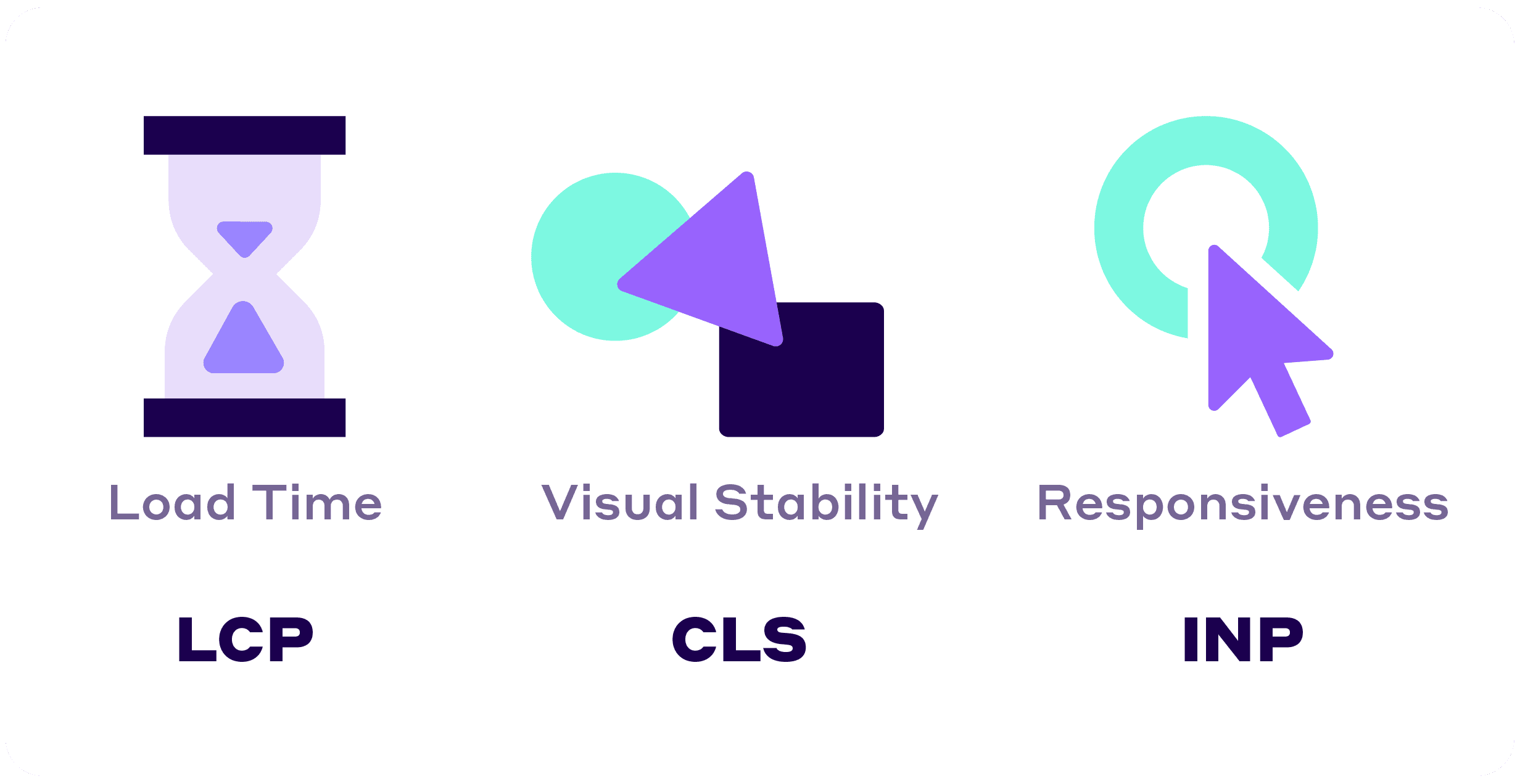
And you may be surprised to hear that but it’s more critical than ever to pass Core Web Vitals.
How so?
As Generative AIs like Gemini and ChatGPT continue to evolve and redefine search engines, their impact on eCommerce and search engine results pages (SERPs) is expected to be significant.
With SERPs becoming more dynamic and personalized, offering instant answers and product recommendations generated by Generative AI and instant page navigations with Speculation Rules API, the emphasis on user experience will intensify.
eCommerce sites that excel in delivering content quickly, respond seamlessly to user interactions, and maintain visual stability will likely be favored by search engines.
It’s no secret that Google’s main goal in its Core Web Vitals initiative was to provide users with the best possible experience, efficiently guiding them to where they could find the most relevant information and make purchases without hassle.
And according to the latest Chrome User Experience Report (CrUX), only 45.6% of websites have good LCP, CLS, and INP. Put another way, passing your Core Web Vitals immediately gives you a massive advantage over your competitors.
AI can help you achieve that.
5 AI speed optimization technologies you can leverage to boost your bottom line
AI offers a variety of tools and techniques specifically designed to enhance website performance by automating and refining the tedious optimization process.
Here's a look at how different AI technologies can be harnessed to improve your site speed:
1. Predictive loading
AI can predict user behavior based on past interactions, allowing for preloading certain pages or assets in the browser before the user clicks on them. This predictive page loading significantly reduces wait times, delivering a smoother browsing experience. By analyzing patterns, AI can smartly decide which elements to load in advance, ensuring that users do not have to wait.

2. Intelligent image and video optimization
Large images and videos are often the culprits behind slow-loading websites. AI-driven tools automatically compress and resize media files without compromising quality. More advanced solutions can dynamically adjust the resolution based on the user's screen size and network conditions, ensuring that only the most optimized version of an image or video is delivered.
3. Real-time performance monitoring and adjustment
AI tools continuously monitor website performance, identifying bottlenecks and issues as they occur. By analyzing this data in real time, AI can make instant adjustments to improve speed, such as modifying cache settings, reallocating resources, and adjusting content delivery based on current load and user behavior.
4. Code optimization
AI can also assist in optimizing the underlying code of a website. By analyzing the structure and dependencies of scripts and stylesheets, AI tools can suggest or even automatically refactor code to eliminate redundancies, reduce the number of server requests, and ensure that critical resources are loaded first. This results in a faster, more efficient website.
5. Smart caching decisions
Beyond traditional caching strategies, AI can make smart decisions about what content to cache and for how long based on the likelihood of users revisiting it. This dynamic approach to caching ensures that users receive the most up-to-date content with minimal loading times.
Introducing Navigation AI by Uxify
Navigation AI is an AI-powered web browsing optimizer that actively predicts and analyzes user behavior to prerender entire pages during the customer journey.
It allows site owners, regardless of their platform, to offer instant browsing experiences on both desktop and mobile, boosting customer engagement and conversion rates along the way.
The way Navigation AI does it is by using Speculation Rules API:
Firstly, it applies AI-enhanced initial predictions on page load based on data without passing it over to the Speculation Rules API (to not overwhelm the browser).
Secondly, it analyzes the user behavior, adjusting the predictions, and instructing the Speculation Rules API to prerender (or prefetch) a page once we’re sure what the following action will be.

These are some of the results you can expect:
Web pages using Navigation AI consistently show a load time of ~2.86s VS 6.12s without Navigation AI.
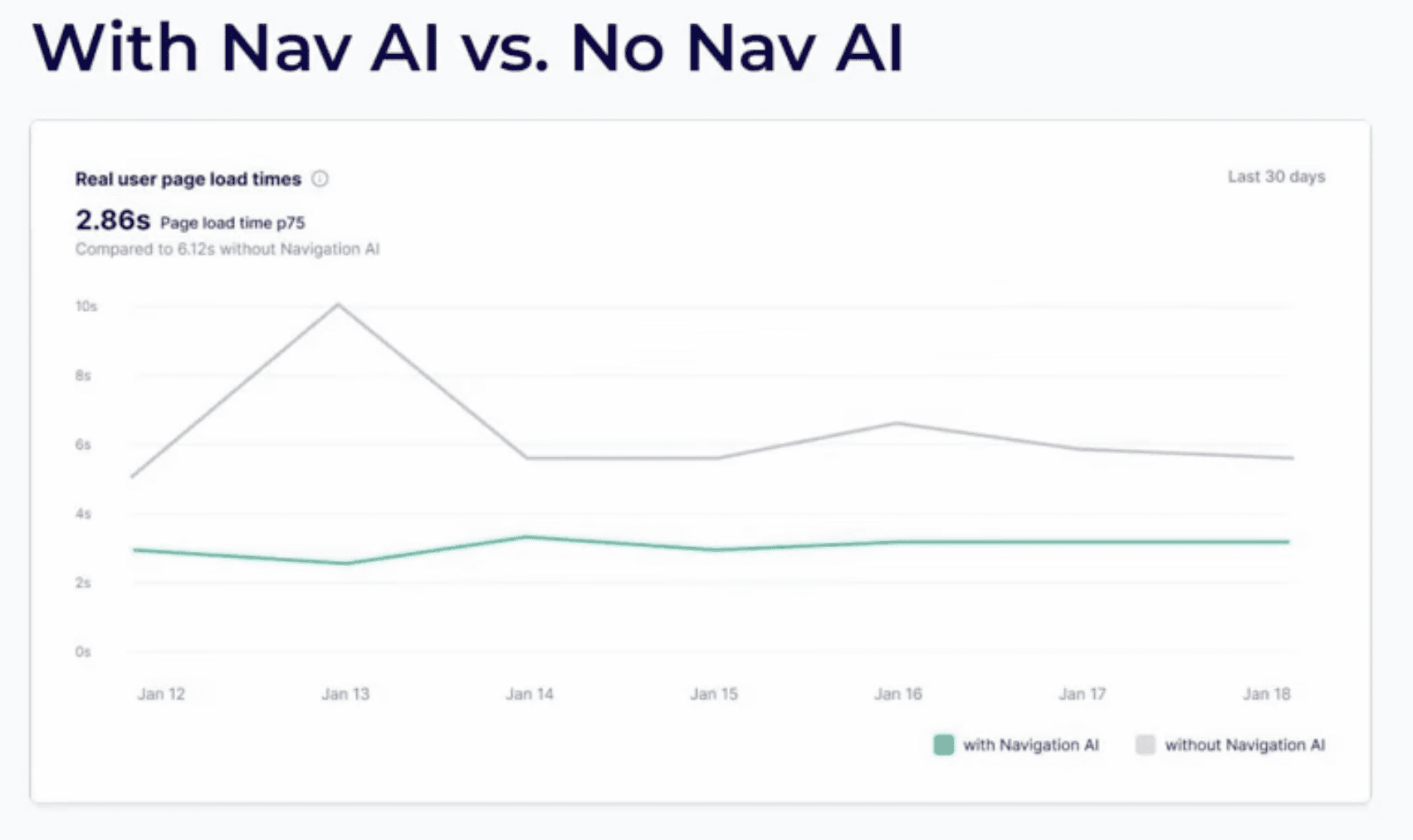
With Navigation AI, prerendered pages show an 85% improvement in LCP (from 3.1s to 0.4s) and an 80% improvement in CLS (from 0.3s to 0.06s).
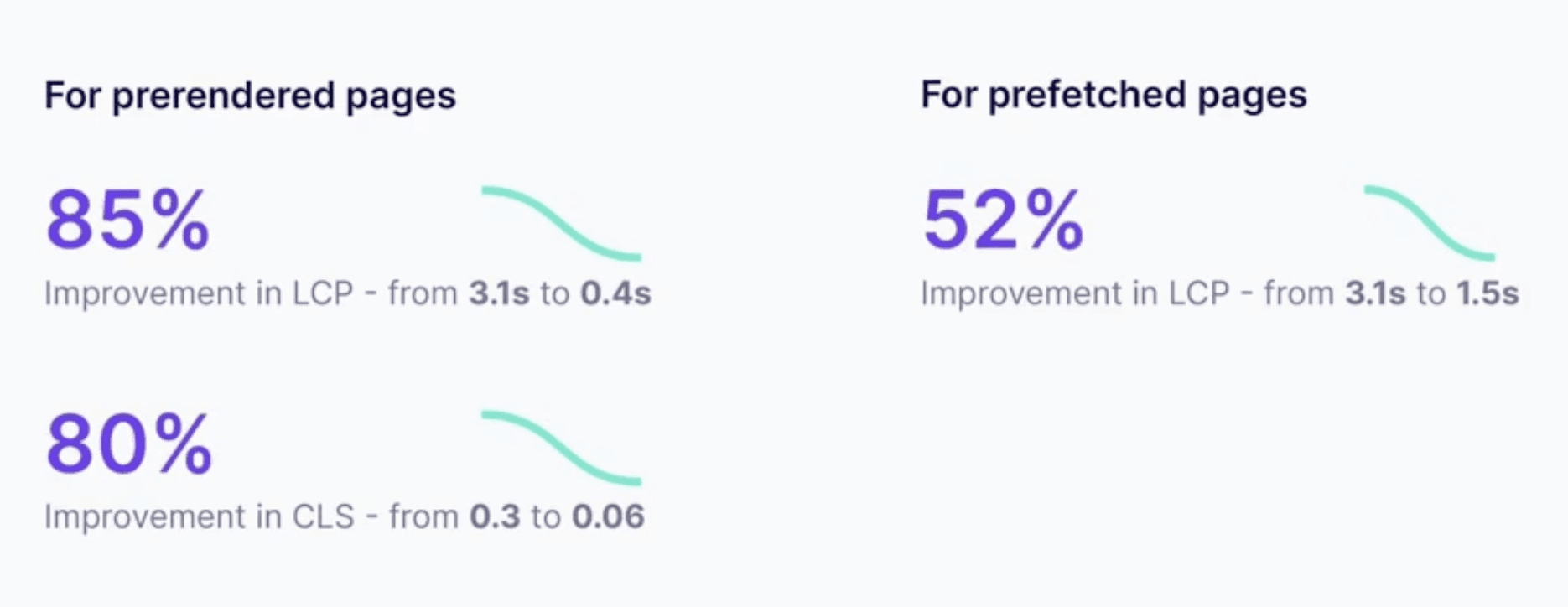
With Navigation AI, performance metrics for the entire website improve significantly: LCP by 15%, CLS by 8%, and TTFB by 26%
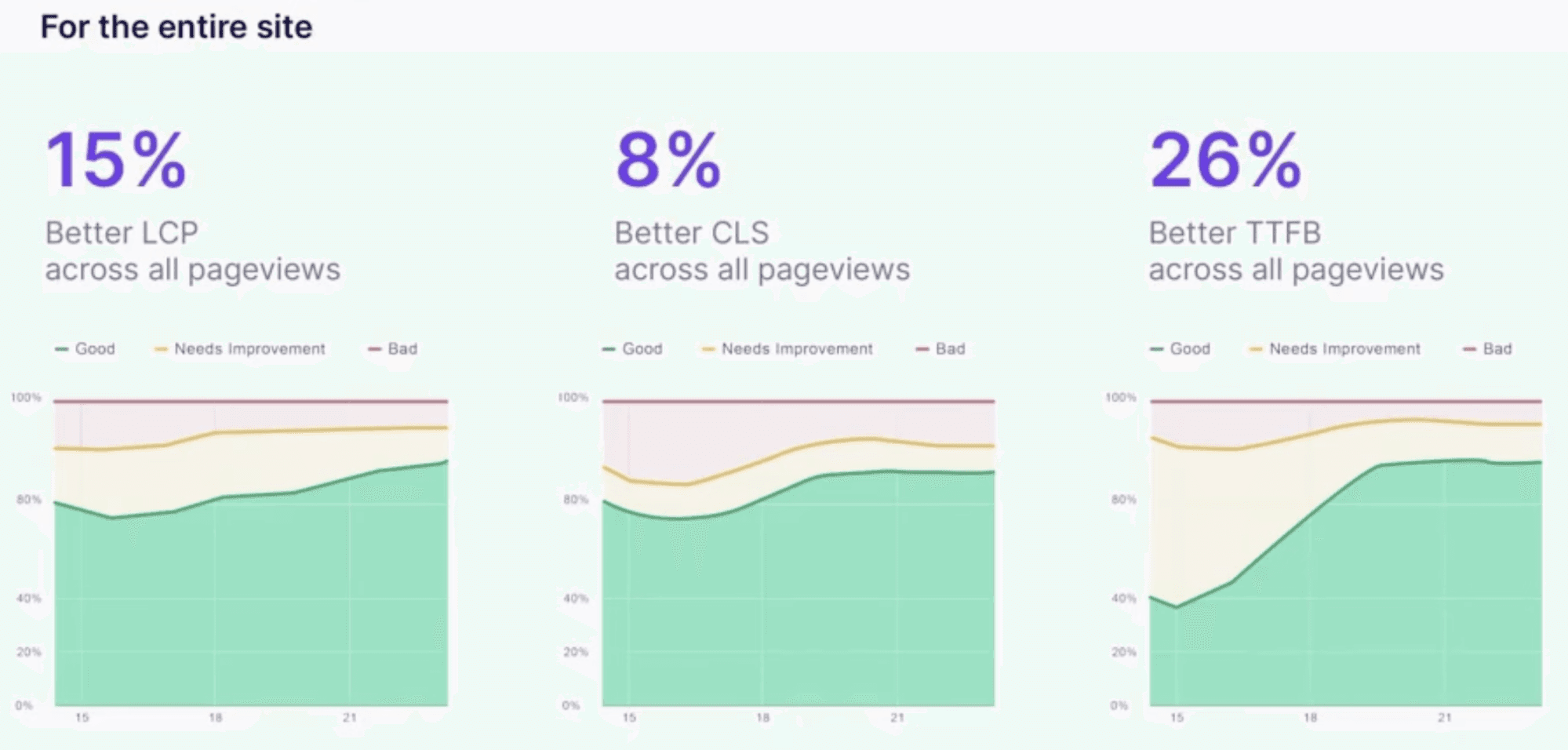
Wrap up
The integration of AI-driven optimizations into your eCommerce store will not only enhance your web performance but also significantly elevate the user experience.
By harnessing AI to intelligently predict user navigations, optimize content in real-time, and swiftly adjust to dynamic web conditions, you are poised to meet the rapidly growing expectations of today's consumers.
In a nutshell, if there’s one thing you should get from this article:
Implementing AI-driven site speed optimizations in 2026 is not just a strategic advantage—it's an absolute necessity.
Niko has spent over 5 years transforming complex, technical topics into content that anyone can understand and appreciate. With a knack for breaking down concepts like Core Web Vitals, web performance metrics, and site speed optimization, he helps demystify the world of web performance.
